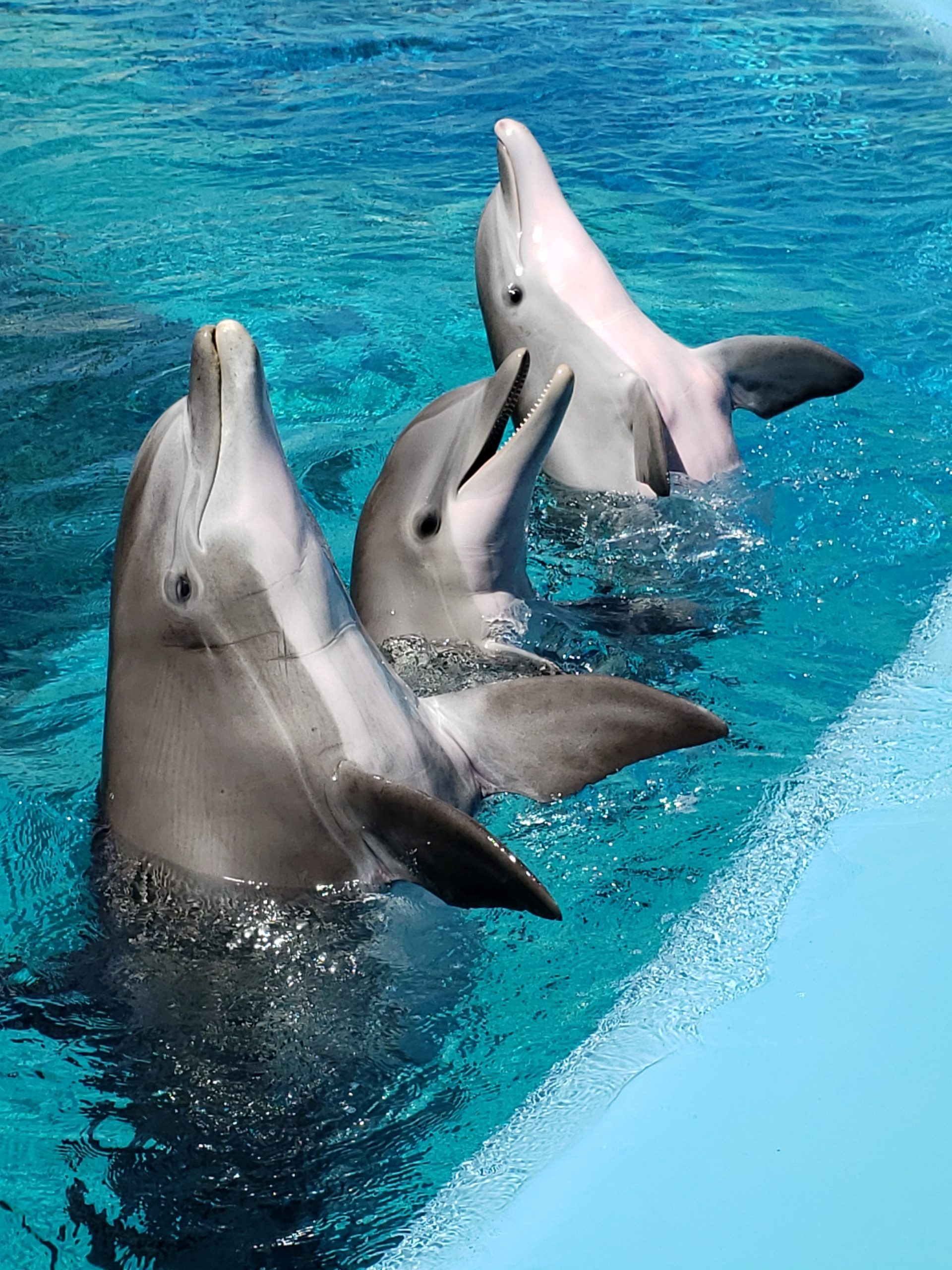Have you ever looked into the eyes of a dolphin and wondered what secrets they hold? Dolphins are known for their intelligence, playfulness, and communication skills. But did you know that their eyes are just as fascinating?
In this blog post, we’ll dive deep into the world of dolphin eyes to unlock the mysteries behind these incredible creatures.
From their unique anatomy to how they use their vision underwater, get ready to discover everything you need to know about dolphin eyes!

Physical Appearance Of Dolphin Eyes
To know about the eyes of a dolphin, the physical appearance of dolphins’ eyes is the first thing we should consider.
Number: Dolphins have two eyes.
Location: The eyes of a dolphin are positioned laterally, that is, one on either side of the head.
Color: A dolphin can have either black or blue eyes. The center is black, with a minor color variation, which is commonly blue or tinged with brown.
Size: Dolphins usually have small eyes, and some dolphins even lack a lens.
Shape: The shape of a dolphin’s eye is oval.
Operculum: A distinctive protrusion in the top section of a dolphin’s iris is known as the operculum. When exposed to low light, the operculum contracts.
Lens Shape: The dolphin lens is more spherical, looking like a little ball. This form enables it to refract light considerably more drastically, compensating for the cornea’s shortage of refraction.
What Makes Dolphin Eyes So Special?
The dolphin’s eyes are among the most special and unique in the animal kingdom. Here are some of the things that make them so special:
1. Dolphin eyes are designed for both underwater and above-water vision.
2. They have a horizontal pupil, which gives them a wide field of view.
3. Dolphins have very good night vision, thanks to a layer of reflective tissue behind their retinae.
4. Their eyes are protected by a thick layer of fatty tissue, which helps to reduce glare and protect against UV rays.
5. Dolphins also have a third eyelid, or nictitating membrane, which helps to keep their eyes moist and healthy.
Features Of Dolphins’ Eyes
Let us now go further into the eyes and vision of dolphins.
1. Vision
Dolphins have a panoramic vision of 300 degrees, meaning they can look forwards, backward, and to the side but not up.
Both in and out of the water, dolphins have excellent eyesight. The eye of a dolphin is uniquely designed for underwater vision.
Dolphins are typically monocular; that is, they process visual inputs with one eye, although they may also use binocular vision, which is when they coordinate both eyes’ vision.

2. Movement
A dolphin’s eyes can move independently of one another, enabling them to view in two directions at once.
3. Field Of Vision
Due to the independent movement of dolphins’ eyes, dolphins have two fields of vision because they can move each eye independently.
But, much like human eyesight, they can move their eyes such that these visual areas overlap.
4. Cornea
The cornea has a diverging lens shape.
Unlike humans, dolphins’ corneas do not bend light at all since it is already going through a liquid.
Underwater light refraction in dolphins is either not influenced by the corneal surface or is affected very little by the corneal surface because the media on both sides of the cornea (water on the outside and anterior chamber liquid on the inside) have refractive indices that are very similar to the corneas.
The corneal surface has relatively low refractive power in the water.
5. Lens
Even though a dolphin’s cornea is designed to take light from water, the lens can adapt to the abrupt change from water to air by moving back and forth in the eye, enabling the dolphin to concentrate nearly as effective in the air as it does in water.
The lens is nearly solely responsible for light refraction and image focusing on the retina in dolphins.
The lens of dolphins is virtually spherical or slightly elliptical as a result of this.
Considerable curvature of the lens surface allows for sufficiently high refractive power of the lens and well-focused pictures on the retina due to the high curvature of the lens surface.

6. Pupil
Dolphins’ pupil does not get bigger or smaller automatically like us, humans. There is a separate structure for the regulation of a dolphin’s pupil called the operculum, which is a flap-like structure.
Whenever illumination levels are too high, the flap over the eye is pushed down, resulting in two black patches on each side of the eye rather than simply one in the center as in humans.
7. Eye Muscles
Dolphins have underdeveloped ciliary muscles, which suggests that modifying the curvature of the lens will not be sufficient to accommodate the animal’s vision.
It has been postulated that dolphins may be able to adapt indirectly by adjusting intraocular pressure and displacing the lens relative to the retina utilizing the musculus retractor bulbi.
They have special muscles in their eyes, which adjust the lens and cornea for light refraction induced by the shift from underwater to aerial vision in the air. A dolphin would be nearsighted in the air if it didn’t have this adaptation.
8. Cells In Eyes
The retinas of dolphins include both rod cells and cone cells, implying that they can see in both low and intense light.
However, dolphins only have one kind of cone cell. Whatever color vision they have is likely to be confined to the blue/green range.
Considering that water absorbs red and yellow hues quickly but allows blue and green to get through, dolphins only need to perceive objects in blue and green.
Underwater, a dolphin uses the same type of back-and-forth movement of the lens to help it focus.
9. Tapetum Lucidum
A layer of reflecting cells behind the retina of dolphins’ eyes, known as the tapetum lucidum, reflects lost light out beyond the retinal cells a second time. This allows dolphins to see better in low-light conditions.
10. Acuity Of Vision
According to studies, dolphins’ sharpness is comparable to or lesser than that of many terrestrial species. There is presently no standard for measuring visual capability distance in dolphins.
What Other Secrets Do Dolphin Eyes Hold?
Dolphin eyes are complex and interesting organs that have many secrets. For example, did you know that dolphins can see in color? They also have excellent night vision and can see objects in low-light conditions better than humans. Additionally, dolphins have a very high level of binocular vision, meaning they can see objects in front of them with great clarity.
But these aren’t the only secrets that dolphin eyes hold. Another interesting fact about dolphin eyes is that they are constantly moving. This is because dolphins need to be able to see in all directions at once to avoid predators and find food. Interestingly, this means that dolphins don’t have a blind spot as humans do.
So what other secrets do dolphin eyes hold? Keep reading to find out more!
Conclusion
So, this was all about the eyes of a dolphin. Although dolphins are thought to have good sight in water and outside water, some sources indicate them to be a vision with poor acuity.
There are also some disparities when it comes to the presence of cones in dolphins.
Regardless of whether dolphins have poor vision or can see every color, their eyes have some fascinating characteristics, such as the ability to adjust their eyes in a coordinated way and move them independently.
I hope this post can help you in receiving the information you want!

